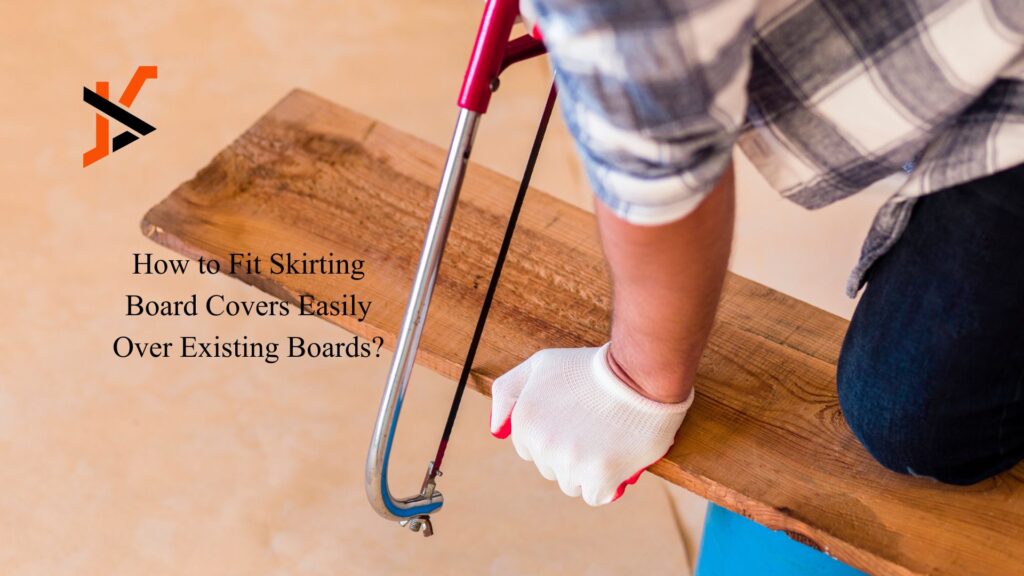Why Skirting Board Covers Are a Smart Option
Updating skirting boards can transform the look of a room, but removing the old ones is often a messy and time-consuming job. Pulling off existing skirting can damage plaster, create dust, and leave you with extra repair work. That’s why many homeowners choose skirting board covers instead.
Skirting board covers are designed to fit neatly over existing boards, giving the appearance of brand-new skirting without the hassle of tearing anything out. They are especially useful in older homes where the original boards are uneven, worn, or no longer suit the style of the room.
What Are Skirting Board Covers?
Skirting board covers are lengths of moulded MDF or timber that slot directly over your current skirting boards. They are slightly taller and deeper than standard skirting so that they conceal the boards underneath. Once fitted, they look like a fresh installation.
They come in a wide range of profiles, from simple square edge styles to decorative ogee and torus designs, meaning you can update the look of your room in line with modern or traditional tastes.
Benefits of Using Skirting Board Covers
There are several advantages to choosing covers over replacement skirting:
- Quick installation – Covers can often be fitted in a day, even throughout a whole house.
- No damage – You avoid ripping skirting off and damaging plaster or paintwork.
- Cost-effective – Saving time and avoiding wall repairs can make covers more affordable.
- Versatility – Available in many designs and heights to suit different spaces.
- Professional finish – Once installed and painted, they look like brand-new skirting.
Tools and Materials You’ll Need
Before starting, make sure you have the right tools and supplies ready:
- Skirting board covers cut to the correct height
- Tape measure and pencil
- Saw (hand saw or mitre saw for neat joints)
- Strong adhesive suitable for MDF or timber
- Grab adhesive gun or applicator
- Sandpaper for smoothing joints
- Caulk and filler for gaps
- Paint or primer for finishing
Having everything prepared will make the installation smoother and faster.
Step-by-Step Guide to Fitting Skirting Board Covers
1. Measure the Existing Boards
Start by measuring the height and depth of your current skirting boards. Skirting covers need to be larger in both dimensions to ensure they fit over properly. Most covers are designed with extra allowance, but always double-check before buying.
2. Choose the Right Profile
Pick a skirting cover profile that complements your interior. Square edge and bullnose profiles work well in modern homes, while ogee and torus give a more traditional finish.
3. Cut Covers to Length
Measure each wall length and cut your skirting covers accordingly. For neat joints in corners, use a mitre saw to achieve accurate 45-degree cuts. Dry fit each piece before securing to make sure it lines up properly.
4. Apply Adhesive
Apply a strong grab adhesive along the back of the cover. A zigzag pattern ensures even coverage. Press the cover firmly against the existing skirting, holding it in place for a few seconds to allow the adhesive to bond.
5. Check Alignment
As you fit each section, check it is level and flush against the wall. Using a spirit level can help keep everything straight.
6. Join Sections Neatly
Where two covers meet, make sure joints are tight. Sand lightly if necessary to achieve a smooth connection.
7. Fill and Caulk
Once all covers are in place, use filler for any small gaps between joints and caulk along the top edge for a seamless transition to the wall. Allow this to dry before painting.
8. Paint or Finish
Finally, prime and paint the covers in your chosen colour. White is the most common choice for a clean, modern look, but they can be painted in any shade to suit your décor.
Tips for the Best Results
- Always buy slightly more skirting cover than you think you need to allow for mistakes or tricky cuts.
- If walls are uneven, flexible adhesive can help the cover sit flush.
- Consider professional fitting if you have curved walls or want a flawless finish.
- Take your time on corners and joints, as these are the areas that make the most difference visually.
Are Skirting Board Covers Suitable for Every Home?
Skirting covers work well in most properties, but there are a few things to check first. If your existing skirting is very high, finding a suitable cover may be harder, as covers need to be taller. In cases where the current skirting is in very poor condition or loose, replacement might still be the better option.
For the majority of homes, however, covers offer a fast, clean, and affordable upgrade.
Maintenance of Skirting Board Covers
Once fitted, skirting board covers are easy to maintain. MDF covers can be wiped clean with a damp cloth, and painted finishes can be touched up if scuffed. Regular dusting will help keep them looking fresh. If properly installed and cared for, they will last just as long as traditional skirting boards.
Why Homeowners Choose Covers Over Replacement
The popularity of skirting board covers has grown as more people look for quick and effective home improvement solutions. They are particularly attractive to those renovating older homes, landlords upgrading rental properties, or anyone who wants a modern finish without major disruption.
By avoiding plaster repairs, saving on labour, and still achieving a brand-new look, it’s clear why covers are a go-to option.
Final Thoughts
Fitting skirting board covers is one of the easiest ways to refresh a room. With the right measurements, a good adhesive, and careful finishing, they can be installed quickly and leave you with a seamless, modern result.
Instead of the stress of removing old boards, covers allow you to update your interior with minimal mess and effort. Whether you want a sleek modern design or a more traditional profile, skirting board covers provide a practical and stylish solution.

